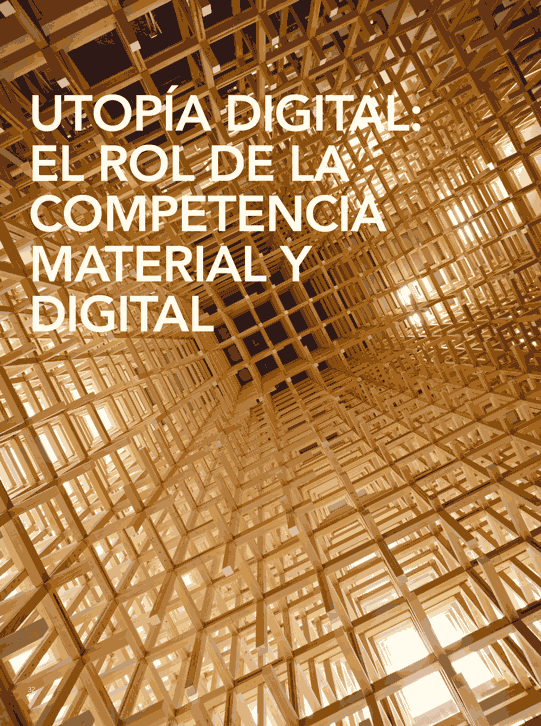Utopía digital: El rol de la competencia material y digital
Article Sidebar

Keywords:
Main Article Content
Abstract
El nivel de posibilidades de experimentación en diseño y construcción que permiten las tecnologías digitales no tiene precedentes. Este artículo argumenta que las tecnologías digitales y la fabricación digital apoyan una reconexión con los materiales y la materialidad, al mismo tiempo que facilitan la exploración de ideales utópicos en un contexto de diseño. Se discuten ejemplos notables de proyectos profesionales y académicos que adoptan un enfoque centrado en lo material, y que fueron realizados gracias al uso de tecnologías digitales y de fabricación digital.
Abstract
Digital technologies allow for an unprecedented level of design experimentation and construction possibilities. The article presents the argument that digital technologies and fabrication support a re-connection to materials and materiality, whilst facilitating the exploration of utopian ideals within a design context. Recent exemplars in the fields of architecture and academia that embrace a materials-first approach to innovative projects made possible by digital technologies and digital fabrication are discussed.
Article Details
Materia Arquitectura provides immediate and free access to all the content of this online edition, published simultaneously with the print edition.
Materia Arquitectura does not charge authors for any concept.
All contents of this electronic edition are distributed under the Creative Commons license of "Attribución-shareAlike 4.0 Internacional" (CC-BY-SA).
The rights of the published texts and images belong to their authors, who grant Materia Arquitectura the license for their use. The management of the permits and the authorization of the publication of the images (or of any material) that contains copyright and its consequent rights of reproduction in this publication is the sole responsibility of the authors of the articles.
As long as they mention their origin, the authors are free to distribute their articles by other means. Any total or partial reproduction of the material must mention its origin.
Downloads
References
BROWNELL, B. E. (2011). Matter in the Floating World: Conversations with Leading Japanese Architects and Designers. Nueva York, NY, EE.UU.: Princeton Architectural Press.
FARMER, G., & STACEY, M. (2012). In the making: Pedagogies from MARS. Architectural Research Quarterly, 16(4), 301-312.
FUAD-LUKE, A. (2009). Design Activism: Beautiful Strangeness for a Sustainable World. Sterling, VA, EE.UU.: Earthscan.
LOSCHKE, S. (2014). Crafting relations: Aspects of materiality and interactivity in exhibition environments. Craft + Design Enquiry(4), 89-107.
MENGES, A. (2012). Material Computation: Higher Integration in Morphogenetic Design. Architectural Design, 82(2), 14-21.
MENGES, A., & REICHERT, S. (2012). Material capacity: Embedded responsiveness. Architectural Design, 82(2), 52-59.
OXMAN, N. (2010). Structuring materiality. Architectural Design, 80(4), 78-85.
OXMAN, N. (2015). Templating design for biology and biology for design. Architectural Design, 85(5), 100-107.
OXMAN, N., ORITZ, C., GRAMAZIO, F., & KOHLER, M. (2015). Editorial. Computer-Aided Design, 60, 1–2.
PINDER, D. (2015). Reconstituting the Possible: Lefebvre, Utopia and the Urban Question. International Journal of Urban and Regional Research, 39(1), 28-45.
SHEEREN, O. (Setiembre de 2015). Ole Sheeren: Why great architecture should tell a story (Ted Talk). Obtenido de www.ted.com:
https://www.ted.com/talks/ole_scheeren_why_great_architecture_should_tell_a_story?language=en
Most read articles by the same author(s)
- Natalie Haskell, Digital Utopia: The Role of Materially and Digital Competency , Materia Arquitectura: No. 13 (2016): Materia Arquitectura 13 (Agosto/August 2016)